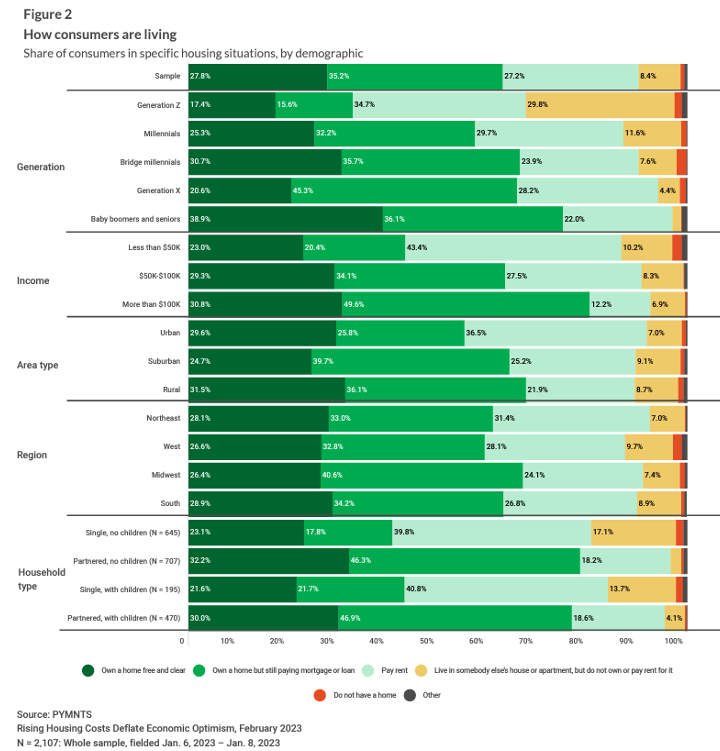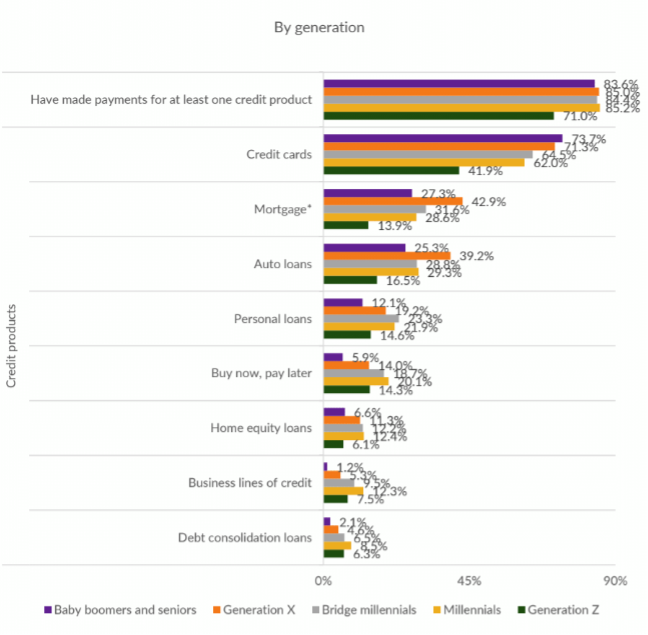Why Seniors’ Surprisingly Strong Spending Power Starts at Home

Paid-off homes and higher savings cushions could be behind the elder generation’s purchasing abilities.
Even as they ease out of their peak earning power, baby boomers and seniors remain the generation most able to make ends meet. Born before 1964, members of this demographic are largely considering reducing their working hours or easing into retirement — if they are not there already. But instead of having to reduce their financial lifestyle, as many would expect, baby boomers and seniors are proving more economically secure across age cohorts — even compared to their higher-earning Generation X and millennial counterparts.
Proprietary research carried out in preparation for the June PYMNTS collaboration with LendingClub, “New Reality Check: The Paycheck-To-Paycheck Report,” has revealed that baby boomers and seniors are the most financially secure generation. Only 49% of the demographic live paycheck to paycheck, meaning this is the only demographic with less than half its consumers struggling to make ends meet, even as the economy starts its slow path to recovery.

One key factor is likely housing status, which is noted in the February PYMNTS “Consumer Inflation Sentiment” report. As perhaps expected given their life phase, this demographic has the highest rate of consumers who own their homes outright: 39%. Removing the often significant expense of housing from baby boomer and senior spending equations could heavily contribute to this demographic’s more secure financial lifestyle, and thereby its increased spending power.
Indeed, per proprietary research created in preparation for the April Paycheck-to-Paycheck report, baby boomers and seniors are paying off less loans and other forms of credit. The absence of these monthly bills may also contribute toward the demographic’s increased purchasing ability compared to consumers of other generations who may be saddled with these debts.

Brands are realizing that baby boomers and seniors may enjoy more purchasing power than younger generations, who have historically been retailers’ main focus. Covering the reversing trend of prioritizing youth over spending potential, PYMNTS recently reported, “The beauty industry is currently placing a renewed emphasis on older women as a means of capturing the attention of one of the wealthiest cohorts of consumers. Brands such as L’Oréal have enlisted several notable industry figures, including Helen Mirren (77 years old), Jane Fonda (85 years old), Viola Davis (57 years old), and Maye Musk (74 years old), who became CoverGirl’s oldest model in 2017. In addition, e.l.f. Cosmetics selected Jennifer Coolidge as an influencer and featured her in its 2023 Super Bowl commercial. These moves represent a concerted effort by the industry to increase consumer spending among older women.”
Financial factors such as housing costs and relatively lower rate of paycheck-to-paycheck consumers seem to be stronger influences on baby boomer and senior spend than attributes influencing other generations, such as income expectations. With no signs on the horizon of this age cohort’s status significantly shifting, retailers and others catering to this demographic may consider following the lead of select beauty sector players and focus on their potential spend.

